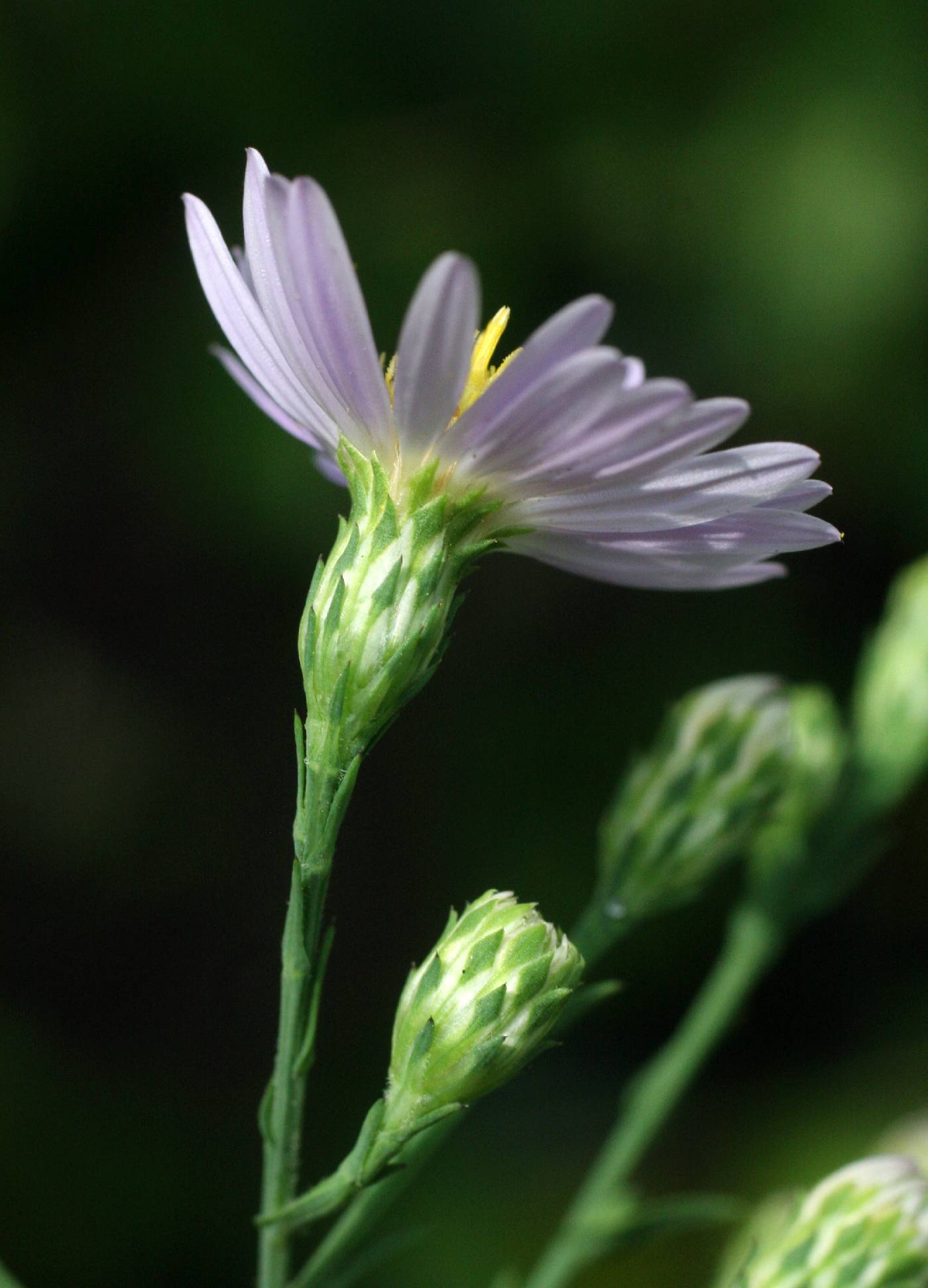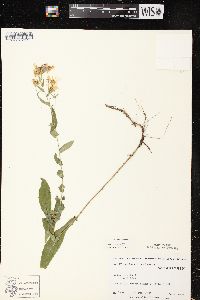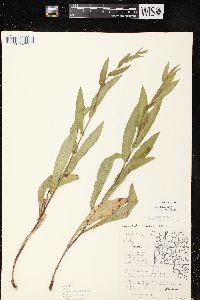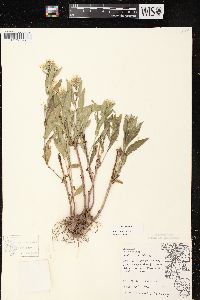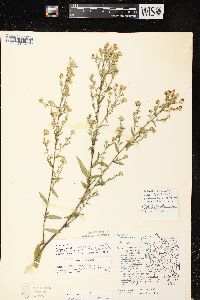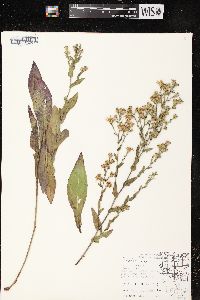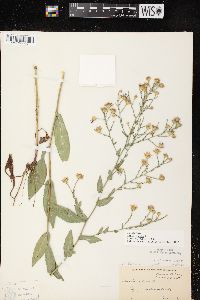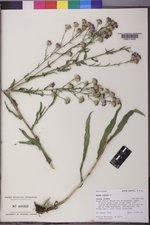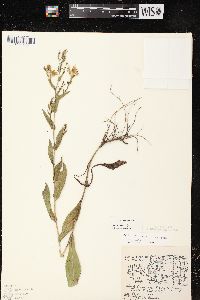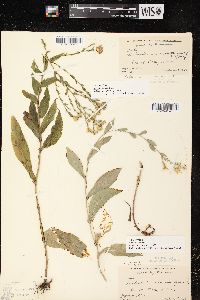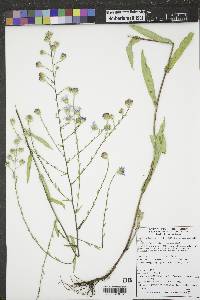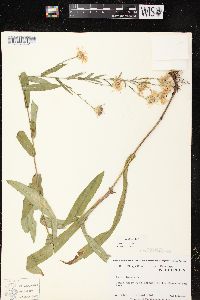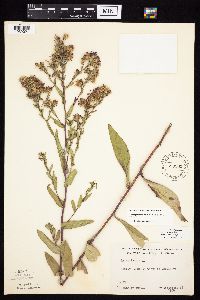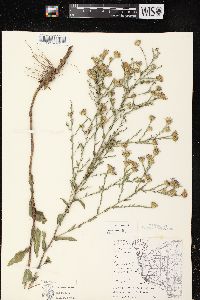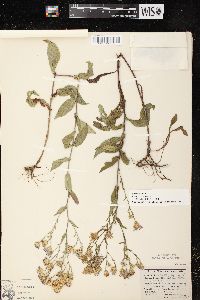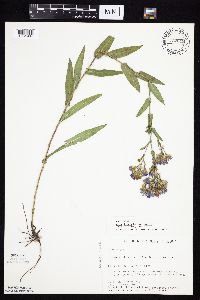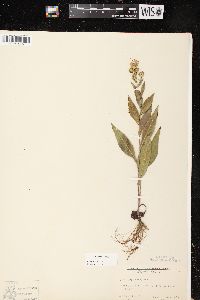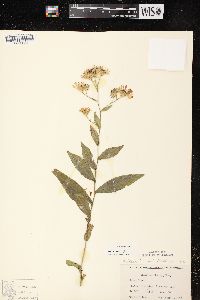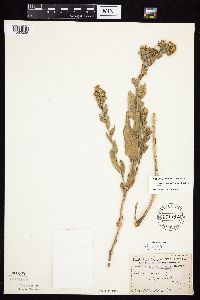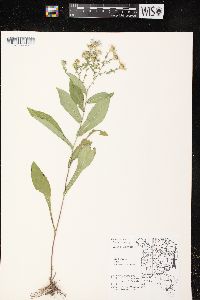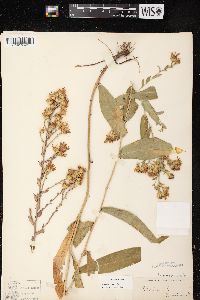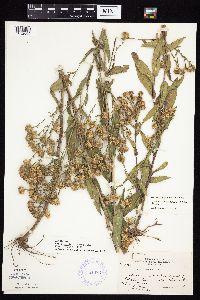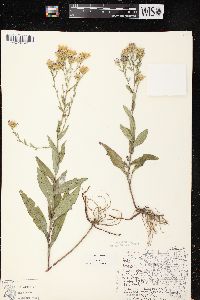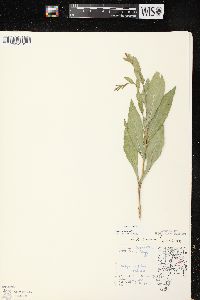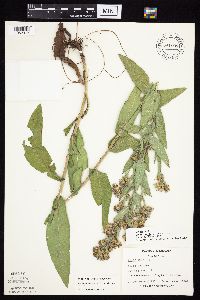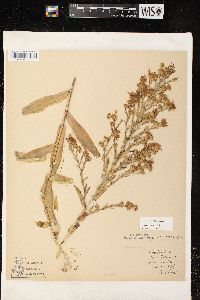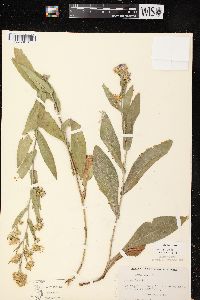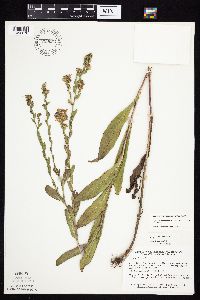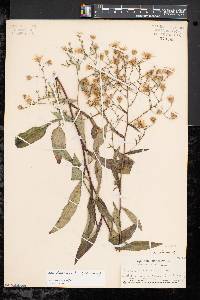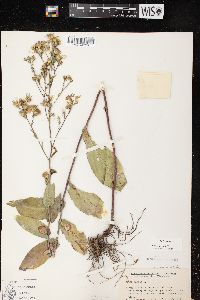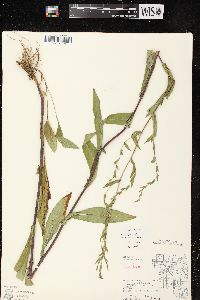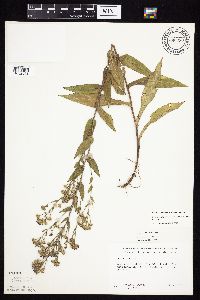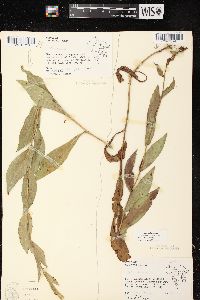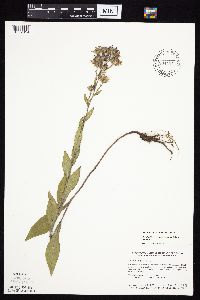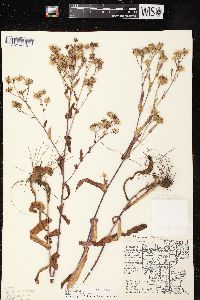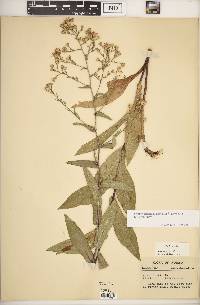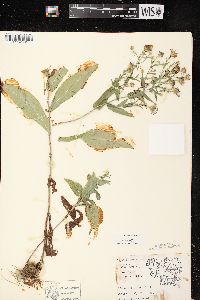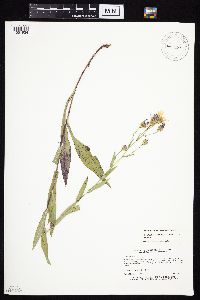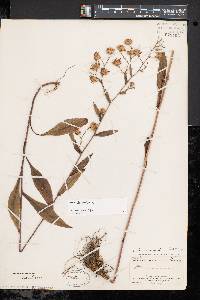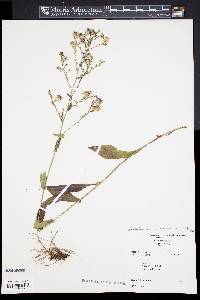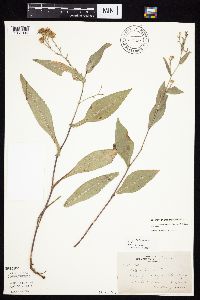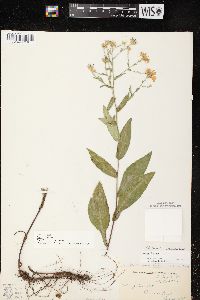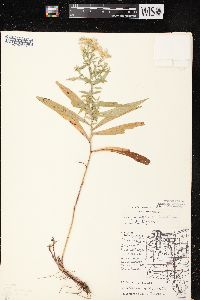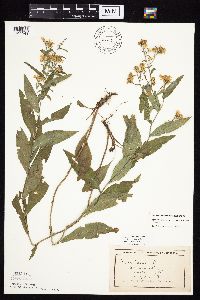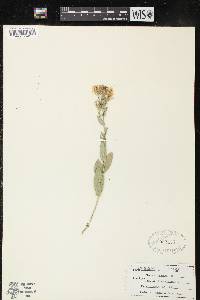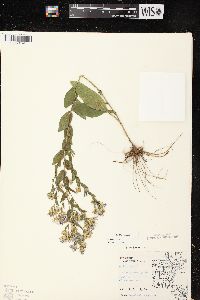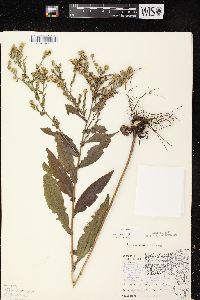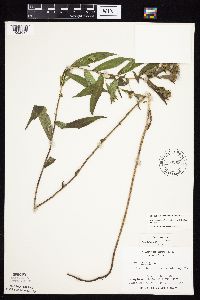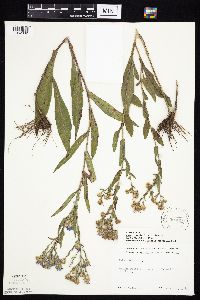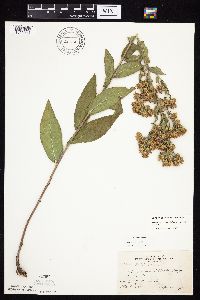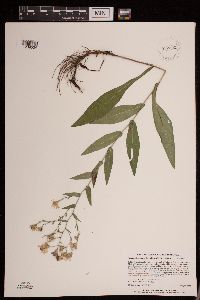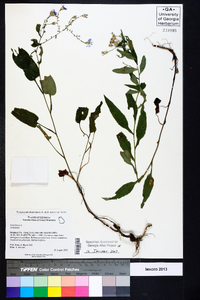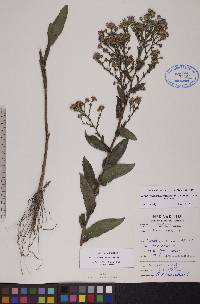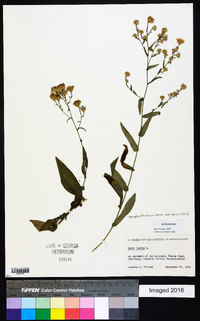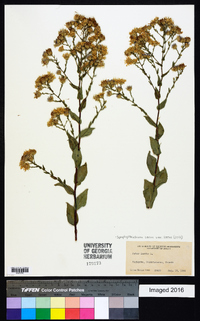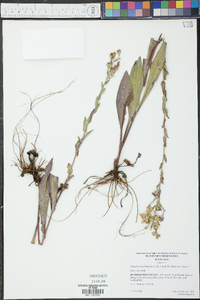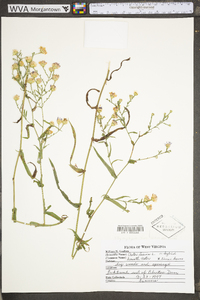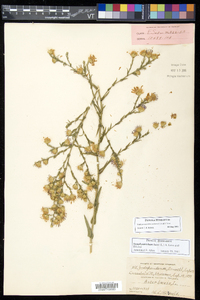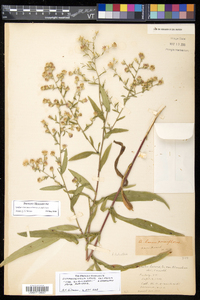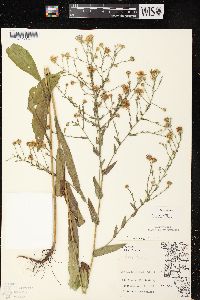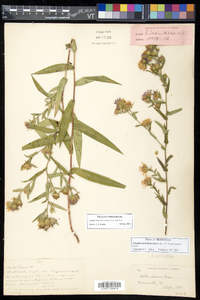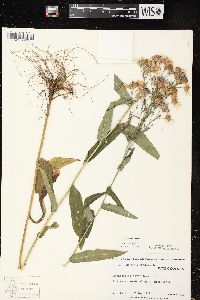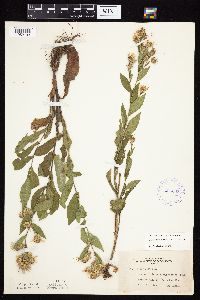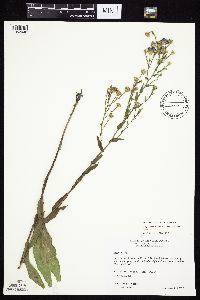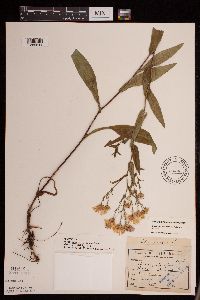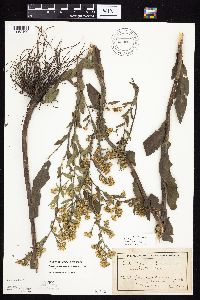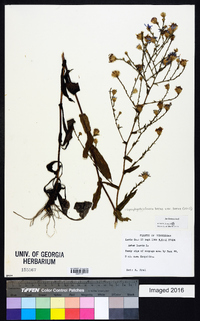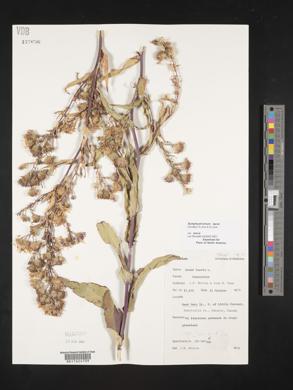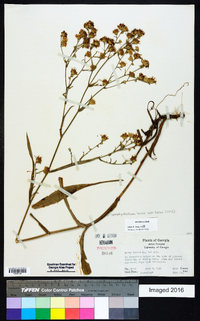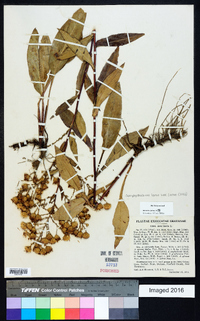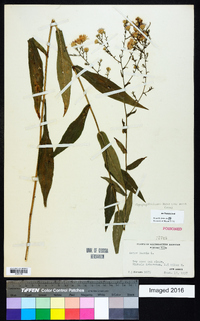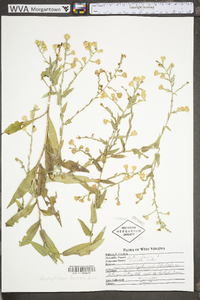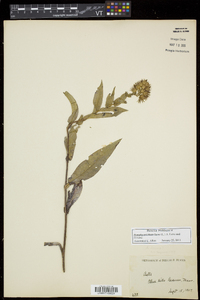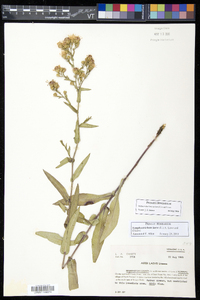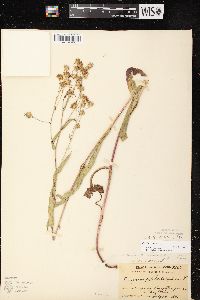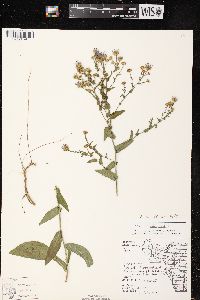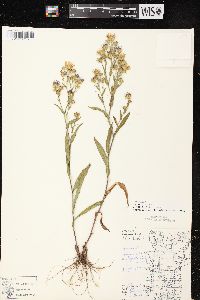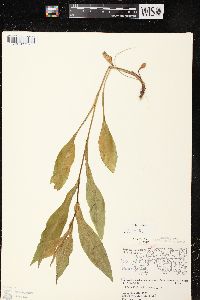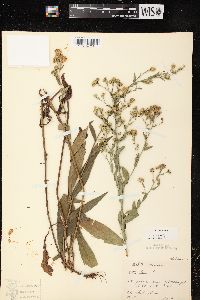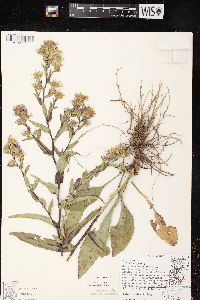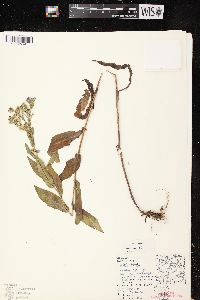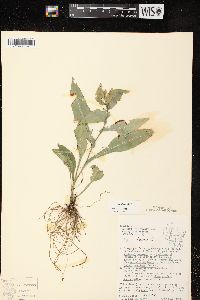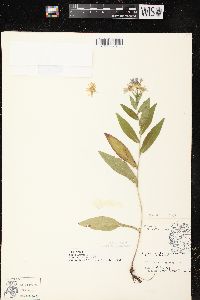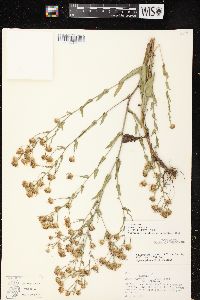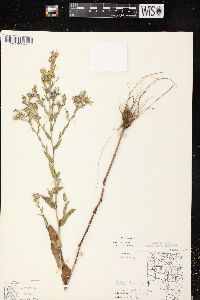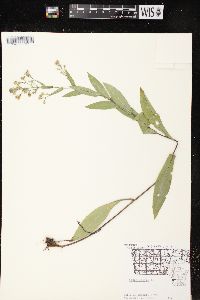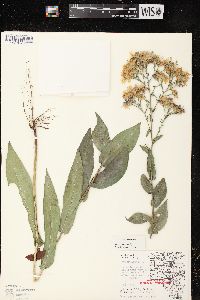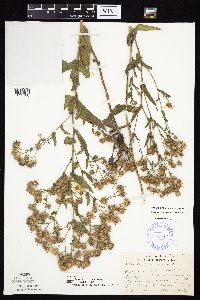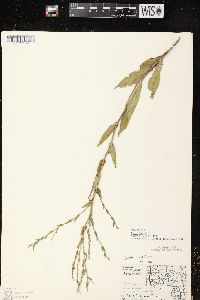
|
|
|
|
Family: Asteraceae
Smooth Blue American-Aster, more...smooth blue aster
[Aster falcidens Burgess, moreAster laevis var. falcatus Farw., Aster laevis var. laevis , Aster steeleorum Shinners] |
Leaves lanceolate to ovate, conspicuously auriculate-clasping, less than 5 times as long as wide. Phyllaries strongly unequal, apical green zones diamond-shaped. 2n = 48. Flowering (Jul-)Aug-Oct. Open, dry habitats, mixed- and tallgrass prairies, open, dry oak and other deciduous forests, glades and alvars, roadsides; 0-1000+ m; Man., N.B., Ont., Que.; Ala., Ark., Conn., Del., D.C., Ga., Ill., Ind., Iowa, Kans., Ky., Maine, Md., Mass., Mich., Minn., Mo., Nebr., N.H., N.J., N.Y., N.C. , N.Dak., Ohio, Pa., R.I., S.Dak., Tenn., Vt., Va., W.Va., Wis.; introduced in Mexico, West Indies, Central America, South America, Europe. Variety laeve is found in the tallgrass prairies area and midwestern deciduous forest, mainly west of the Appalachian Mountains, but reaching the Atlantic from New Jersey to New England. It was introduced in Quebec and New Brunswick; it is also widely introduced outside North America. It is sold in the horticultural trade. Aster laevis forma beckwithiae House is a white-rayed phenotype that is not recognized here. Hybrids of this variety have been reported with Symphyotrichum ciliolatum, S. cordifolium, S. drummondii, S. lanceolatum, S. lateriflorum, S. oolentangiense, and S. urophyllum. The hybrid with S. praealtum was described as Aster novibelgii Linnaeus var. litoreus A. Gray [S. novibelgii var. litoreum (A. Gray) G. L. Nesom; J. Labrecque and L. Brouillet 1996]. Symphyotrichum ×versicolor (Willdenow) G. L. Nesom (Aster versicolor Willdenow) is the hybrid between S. laeve var. laeve and S. novibelgii var. novibelgii. It is of garden origin and has escaped locally in Europe but has not been reported in North America. Symphyotrichum ×gravesii (E. S. Burgess) G. L. Nesom (Aster gravesii E. S. Burgess), originally reported from Connecticut, may be the hybrid between S. laeve var. laeve and S. dumosum, though annotations suggest that the second parent might be S. cordifolium. Symphyotrichum ×woldenii (Rydberg) G. L. Nesom (Aster woldenii Rydberg), initially reported from Iowa, is possibly the hybrid between S. laeve var. laeve and S. praealtum, or S. oolentangiense and S. praealtum. The question of exact parentage is unresolved. Distinction between var. laeve and var. geyeri is based on phyllary morphology. The two varieties appear to intergrade in the northeastern prairies but are mostly well defined at the extremes of the range, though plants in the western United States sometimes appear similar to var. laeve. These varieties are much more similar to each other than either is to var. concinnum or var. purpuratum and should be grouped in subsp. laeve. Alternately, var. geyeri could be considered a synonym of var. laeve.
From Flora of Indiana (1940) by Charles C. Deam Infrequent to rare in all parts of the state. It is generally found on white and black oak ridges and on bluffs of streams, in clayey soil or more often in very sandy soil. It is also found in prairie habitats and in Posey County I found it on the bank of a pond that usually overflows each year. The great variation of this species in the shape and width of the leaves (1-4 cm wide), and in the form of the inflorescence has resulted in the description of 9 varieties. The involucres of my specimens are usually 6-7 mm long. The upper bracts are mostly 1-1.4 mm wide, abruptly acute (rarely acuminate) and usually with slightly spreading tips. An exception is my no. 11970, collected August 4, 1912, along the railroad about a mile east of Dana in Vermillion County. In this the inflorescence is fastigiate and very leafy; the involucres are 8-10 mm long and the bracts are narrower than those of the typical form and are long-acuminate. [Deam says the following about variety falcatus of this species:] Farwell describes this variety as follows: "Panicle usually shorter and ovate; median stem leaves usually broadest at the auriculate base, linear or oblong-lanceolate, under three fourths inch wide and often 6 inches long, some of them falcate; small subulate leaves as in the preceding variety" (var. laevigatus). I have this variety from the wooded sand hills about 3 miles south of Ft. Wayne, Allen County, and from an upland woods about 2 miles south of Oriole, Perry County. The specimens are deposited in the Gray Herbarium. …… Indiana Coefficient of Conservatism: C = 10 |

